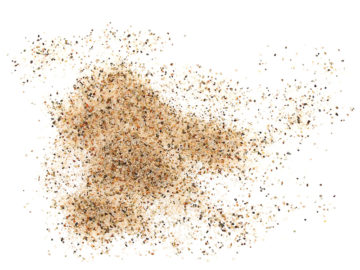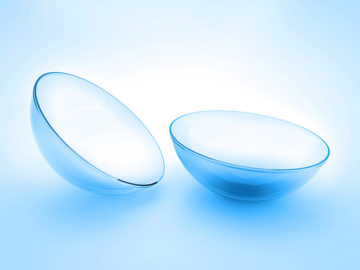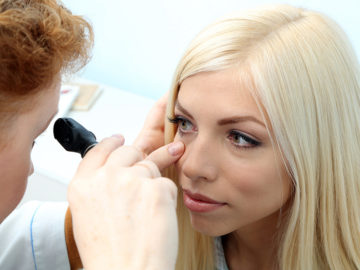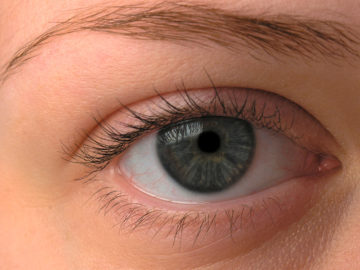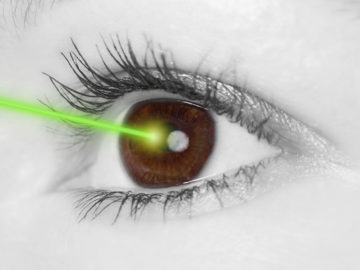Corneal inflammation occurs as a result of infections and a lack of tear film
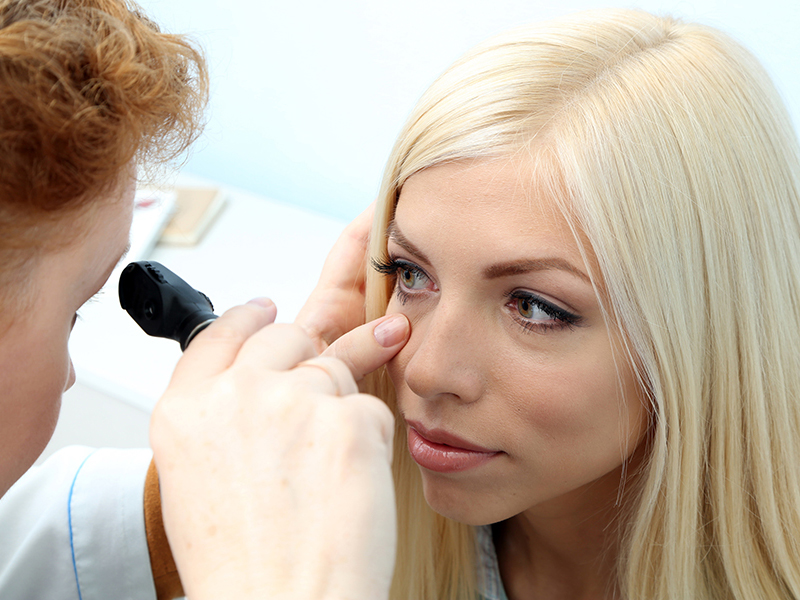
An eye doctor should be consulted immediately if you have a corneal inflammation.
Corneal inflammation (keratitis) can result from defective tear film or infections due to bacteria, fungi or viruses. People who are in particular affected by infections are contact lens wearers, older people, immunocompromised people, alcoholics and diabetics. Corneal inflammation can be very painful. The cornea can cloud over, a convulsive closing of the eyes or increased tear flow can develop. In the case of an infection, it is therefore imperative to quickly start treatment in order to avoid serious consequences.
Inflammation of the cornea
The cornea forms the front, convex part of the eyeball. It comprises several layers and is as clear as glass, which is indispensable for unhindered vision. It is less than one millimetre thick and thinner towards the centre than it is on the rim. The cornea is lubricated on the outside by the tear film, which is very important for the refraction of light on the cornea and therefore crucial to ensure sharp vision.
The cornea is permeated with many sensitive nerve endings of the ophthalmic nerve, which perceive stimuli and pass them on. This supply of nerves serves as protection against injuries for the sensitive eye. Any irritation of the nerves, also from a corneal inflammation, leads to pain, the closing of the eyelids and increased tear productsion.
A corneal inflammation is a reaction of the eye’s immune system to pathogens, injuries or other irritations of the cornea. Inflammation can affect the different layers of the cornea individually or in combination. The symptoms of the inflammation are dependant on which layer of the cornea is affected in conjunction with the cause of the inflammation.
In the case of inflammation of the topmost layer of cells on the cornea, the epithelium, there is often a clouding of the cornea. If the lowest layer, the endothelium, is affected, then swelling of the cornea can appear. If the thickest layer lying in between, the stromal layer, is inflamed, then white deposits of cornea can accumulate.
Pathogen-induced corneal inflammation
Corneal inflammation can have the most varied causes and therefore have to be treated in the most varied ways. Quite often it is triggered by pathogens, in particular bacteria. As these infections, in some cases, can spread very quickly and even lead to a loss of sight, it is necessary to be treated immediately by an eye doctor.
Inflammation of the cornea due to bacterial pathogens often occur where contact lenses have been worn too long, as germs can collect here and multiply. The accumulated bacteria are then either no longer removed, or removed insufficiently, by the contact lens solution. The pathogens can infect the cornea if the lenses remain on the eyes for extended periods.
Also, people with general immune deficiency, especially the elderly or diabetics, are often affected by bacterial corneal inflammation. Normally, the bacteria need a port of entry, like a small wound, in order to infect the cornea. The result is often the build-up of pus. It can develop to a yellow-whitish collection of pus in the area in front of the iris, which builds up at the bottom and is clearly visible. Other symptoms are sensitivity to light, pains, spasmodic closing of the eyelid and reddened conjunctiva. The bacterial infection should be treated as quickly as possible with eye drops containing antibiotics.
Viruses like herpes, adenoviruses or varicella zoster virus can also attack the cornea. In these cases, the skin around the eye is often also affected. Treatment is normally with antiviral eye drops, which impede the growth of the viruses. In addition, corneal inflammation can be caused by fungi, amoebas or parasites.
Corneal inflammation due to insufficient lubrication
Alongside infection through pathogens, corneal inflammation can also be caused by defective tear film. Impaired lubrication of the surface of the eye leads to constant irritation of the cornea, for example through involuntary blinking. This can cause a reaction from the immune system, and an inflammation reaction is started. In the case of such inflammation, which occurs without the participation of infectious agents, there is normally no serious damage to the cornea. Foreign body sensation and reddened and watery eyes are, however, common consequences. Furthermore, a dysfunction in lubrication often accompanies other symptoms of dry eyes. Corneal inflammation due to tear deficiency is treated with artificial tears. Eye ointments give relief at night time.


